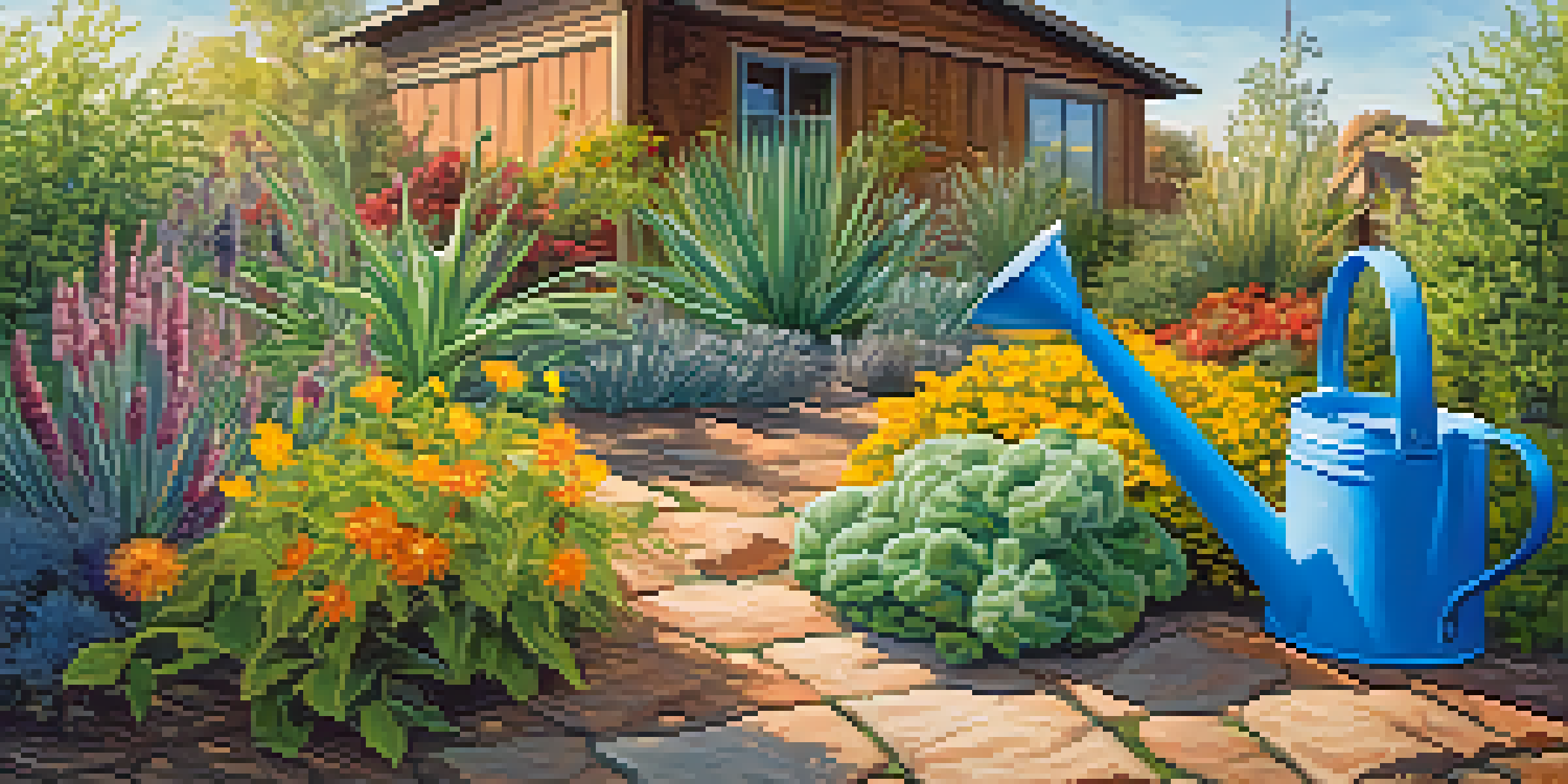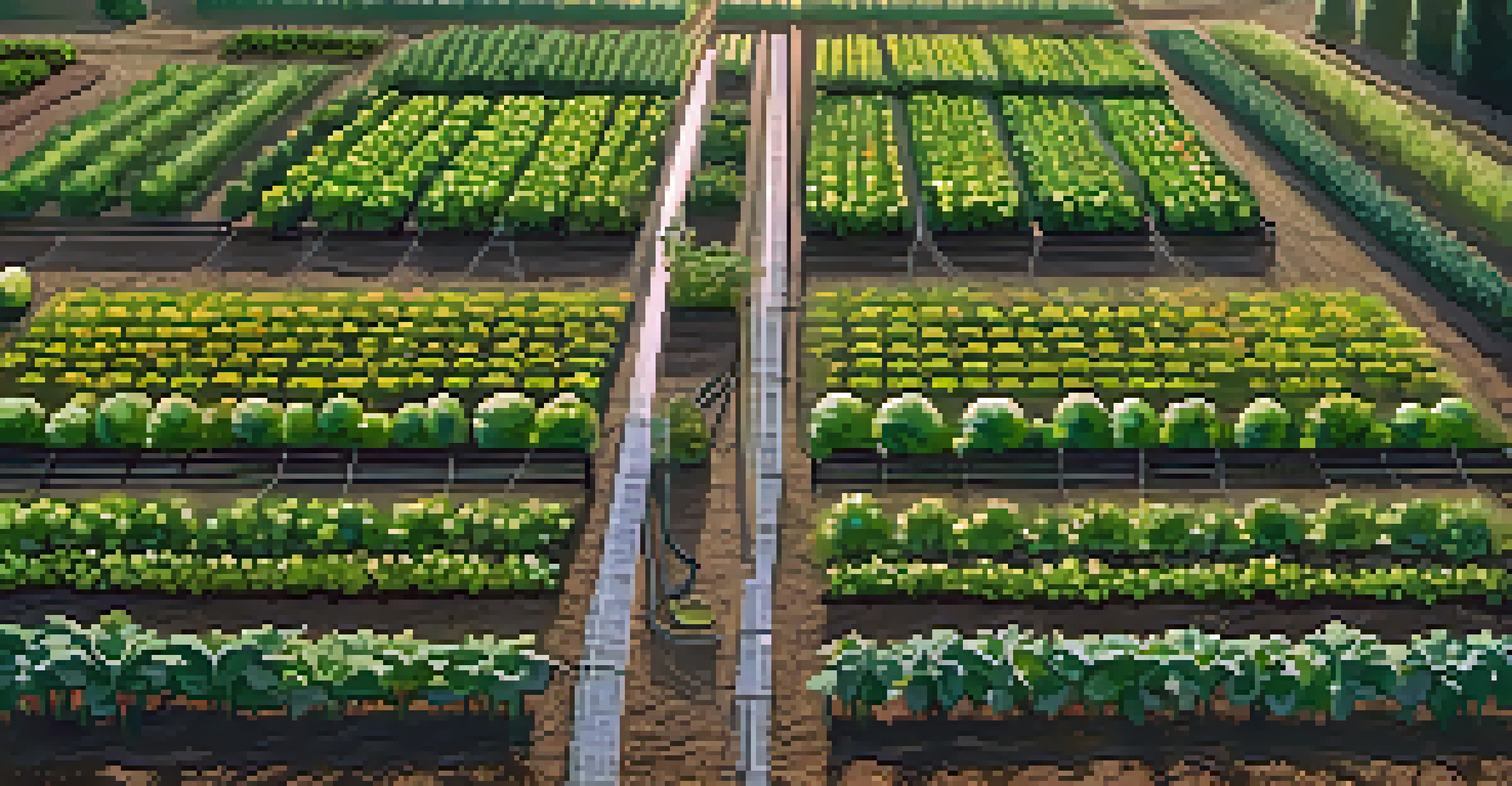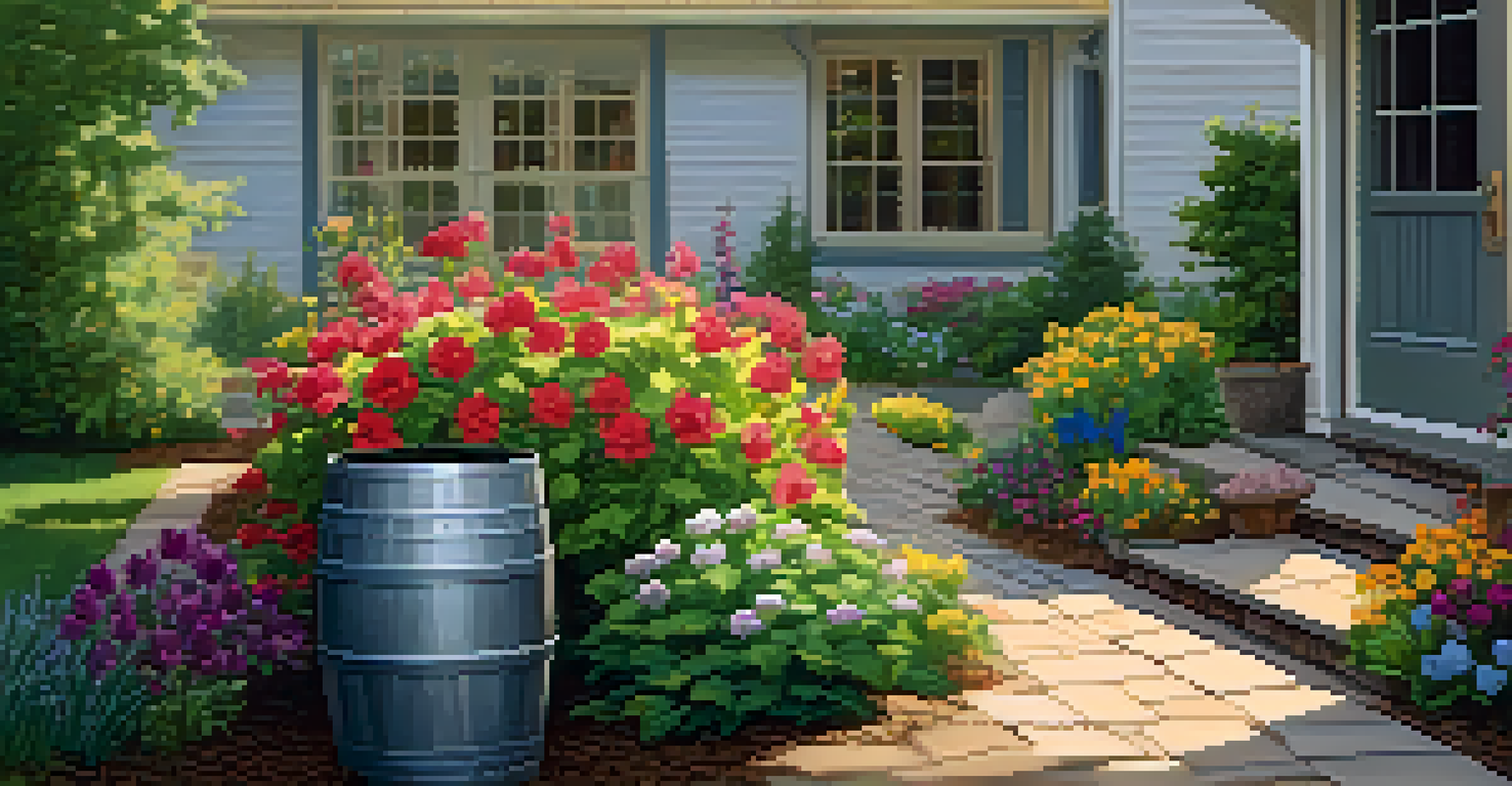Water-Efficient Irrigation Techniques for Garden Plants

Understanding Water-Efficient Irrigation Basics
Water-efficient irrigation refers to methods that minimize water waste while effectively nourishing plants. By using these techniques, gardeners can ensure that their plants receive the right amount of moisture without overwatering them. This is especially important as water scarcity becomes a growing concern in many regions.
Water is the driving force of all nature.
One of the key principles behind water-efficient irrigation is to deliver water directly to the plant's root zone. This reduces evaporation and runoff, making every drop count. By focusing on the plant's needs, you can create a healthier garden ecosystem.
Additionally, understanding the soil type and plant requirements is crucial. Different plants have varying water needs, and adjusting your irrigation practices accordingly can lead to better growth and less waste.
Drip Irrigation: A Game Changer for Gardens
Drip irrigation is one of the most effective water-efficient techniques available today. This method involves delivering water directly to the base of the plants through a network of tubing and emitters. By targeting the roots, drip irrigation minimizes evaporation and drastically reduces water usage.

Another advantage of drip irrigation is its ability to be easily customized. Gardeners can adjust the flow rate to suit the needs of different plants, ensuring each one gets just the right amount of water. This flexibility can lead to healthier plants and improved yields.
Maximize Water with Efficient Techniques
Implementing water-efficient irrigation methods helps minimize waste while effectively nourishing plants.
Moreover, drip irrigation systems can often be automated, allowing for timed watering schedules that match the plants' needs. This not only saves water but also frees up your time, letting you enjoy your garden without constant monitoring.
Soaker Hoses: Simple Yet Effective Solutions
Soaker hoses are another fantastic option for water-efficient irrigation. These porous hoses slowly release water along their length, directly soaking the soil around your plants. This method is especially useful for garden beds and rows of vegetables, as it allows for even watering.
The best time to plant a tree was 20 years ago. The second best time is now.
What makes soaker hoses appealing is their simplicity. They can be laid out in any configuration, making them versatile for various garden designs. Just connect them to a water source and let them do the work, significantly reducing water waste.
Additionally, soaker hoses can be used in conjunction with mulch to further enhance water retention in the soil. By combining these techniques, gardeners can create an efficient watering system that keeps plants hydrated without excessive water use.
Rainwater Harvesting: Nature’s Gift for Your Garden
Rainwater harvesting is an eco-friendly irrigation method that involves collecting and storing rainwater for later use. This technique not only conserves water but also reduces reliance on municipal sources, making it a sustainable choice for gardeners. By using rain barrels or cisterns, you can capture runoff from roofs and direct it to your plants.
Using harvested rainwater is beneficial for plants, as it’s typically free of chemicals found in tap water. This natural resource can be used to irrigate your garden during dry spells, ensuring your plants remain healthy and vibrant.
Drip Irrigation Saves Time and Water
Drip irrigation delivers water directly to plant roots, significantly reducing evaporation and conserving water.
Moreover, rainwater harvesting systems can be relatively easy to set up, making them accessible for many gardeners. By incorporating this practice, you not only save water but also contribute to a healthier environment.
Mulching: Conserving Moisture in the Soil
Mulching is a simple yet powerful technique that helps retain soil moisture and reduce the need for frequent watering. By applying a layer of organic or inorganic materials on the soil surface, you create a barrier that prevents evaporation. This not only keeps the soil moist but also suppresses weeds that compete for water.
Organic mulches, such as straw or wood chips, break down over time, enriching the soil with nutrients. This added benefit helps your plants thrive while contributing to water conservation. Plus, the aesthetic appeal of mulch can enhance the overall look of your garden.
By incorporating mulching into your irrigation strategy, you can create a more sustainable garden. This practice not only saves water but also fosters a healthy growing environment for your plants.
Smart Irrigation Controllers for Precision Watering
Smart irrigation controllers are technological advancements that help optimize water usage in your garden. These devices automatically adjust watering schedules based on weather conditions, soil moisture levels, and plant needs. By using a smart controller, you can ensure your plants receive the right amount of water at the right time.
Many of these controllers can be connected to weather stations or even your smartphone, allowing you to monitor and control your irrigation system remotely. This convenience not only saves water but also makes gardening more efficient and enjoyable.
Choose Plants for Water Conservation
Selecting native and drought-resistant plants can create a vibrant garden while conserving valuable water resources.
Investing in a smart irrigation system may initially seem costly, but the long-term savings in water bills and healthier plants can make it worthwhile. Embracing technology in your garden can lead to better results while being kinder to the environment.
Choosing the Right Plants for Water Efficiency
Selecting the right plants is crucial for conserving water in your garden. Native plants, for instance, are adapted to the local climate and typically require less water once established. By incorporating these plants into your garden, you can create a beautiful landscape that thrives on minimal irrigation.
Drought-resistant plants are another excellent choice for water-efficient gardening. These species are designed to withstand dry conditions and can flourish with less frequent watering. Choosing the right plants not only saves water but also reduces maintenance efforts.

By being mindful of your plant selections, you can create a garden that is both stunning and sustainable. This approach aligns with conservation goals while providing a vibrant space for you to enjoy.